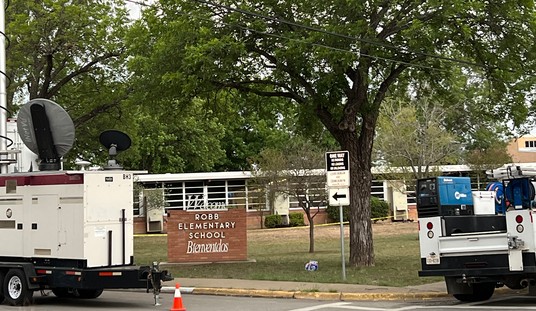Subsidize in haste, repent at leisure. That appears to be the lesson from a RealClearPolitics investigation into emergency pandemic relief targeting children in California, where perhaps more than a billion dollars went into the pockets of the state’s more affluent families. And this doesn’t even involve any fraudulent transactions or motives, but rather bureaucratic incompetence and unaccountability.
The problem, Susan Crabtree reports, begins with a food-stamp program that’s designed to target children of low-income families. Emergency COVID-19 relief relied on that structure to sent pandemic electronic benefit transfer (P-EBT) cards — essentially debit cards — to thousands of teens worth thousands of dollars each. The problem was that these teens didn’t qualify for food stamps, while other teens who did got bupkis:
Food stamp cards carrying as much as $1,700 were arriving in the mailboxes of all students, even those living in multi-million-dollar homes at two local public high schools serving neighborhoods with some of the highest household incomes in the state. The cards were addressed to the students themselves, and some families with more than one child attending the same school received double the amount or more, at least $3,400 worth of cards.
As more people discovered the government-issued largesse, local community online chatrooms were sprinkled with questions on whether the cards were illegal and should be sent back, along with complaints of teens buying sushi and other expensive fare from Whole Foods and other pricey organic markets or using the unexpected funds to throw cookouts and graduation parties. The debit cards can only be used for groceries at supermarkets or Amazon, not in sit-down restaurants or fast-food chains.
Many parents of students receiving the cards, who requested anonymity to speak to RealClearPolitics, weren’t sure what to make of the checks, mainly because their families had never received food assistance from the state and federal government before. And even if they had, the sudden cash windfalls without any warning spurred a myriad of questions: Were they sent by mistake? Would using them trigger tax implications or put their children in a database designating them as recipients of government assistance? The answers from California’s Department of Social Services, which sent the checks, were “No,” “no,” and “no.”
There wasn’t an easy answer for the broader, more penetrating query: Why did their students receive them from the state when more needy families attending different high schools in the same school district did not?
The two schools in question, Torrey Pines and La Costa Canyon, have a combined enrollment of just over 4,000 students. If all the students received a $1700 benefit, that’s an outlay of $6.9 million in pandemic benefits. However, Crabtree reports that close to 900 schools in California fit into the “universal” federal school lunch category as Torrey Pines and La Costa Canyon. That category allows the schools to offer free lunches to all students without a specific show of means-testing. If all of those students got P-EBT cards worth $1700, Crabtree puts the cost at well over a billion dollars. If the 854 California schools have an average of 1000 students each, my calculation puts the total potential cost at roughly $1.4 billion.
However, that’s only if the problem was limited to California. Was it? Almost certainly not:
The same issue is likely occurring in other states with schools that participate in “universal” lunch programs offering free meals regardless of income. A local Atlanta news outlet reported earlier this month that certain schools across the state provided the same type of universal lunch programs as California, and noted that “thousands of students” were receiving the cards. …
California alone has doled out $6 billion in 5 million P-EBT cards, with 4 million of the cards going to K-12 children in public and private schools, a California Department of Social Services spokeswoman told RealClearPolitics.
Many of those likely benefited the intended targets of these programs, but far too many wasted money on those who didn’t need it. It seems all but certain that this problem existed outside of California as well, and just as likely that we will never get a good accounting of how much money got wasted — not out of fraud, but out of bureaucratic incompetence. If it existed on a national scale, we might be talking about tens of billions of dollars — enough to fund Congress’ new COVID-19 funding request, at least.
It’s too late to recover what has already been squandered. Higher-income families who received those cards and used them didn’t break any laws and have no legal requirement to refund those monies. This is, however, a very good reminder of how emergency programs like these usually generate more waste than good — and maybe should shine a new light on the practice of designating schools for “universal” free-lunch status, too.








Join the conversation as a VIP Member